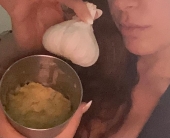
 2
2
















 1
1




 2
2

































"The scheme works as follows: from a high, calabash-shaped basin, living and healthy well water constantly flows downwards to all connected households and subsequently into a lower second basin."




Community Building 2.0: ask me about drL, the rotational-mob-grazing format for human interactions.




Round washed gravel and food grade geotextile is best for this although not necessary in every case.




pato van ostra wrote:Hi Joshua, happy to give an update. We haven't been able to find food grade geotextile — we recently bought geotextile to support the new road we built and the company that supplied us didn't know of any food grade geotextile. In fact, with some of the extra geotextile we had leftover from the road building I created an indoor vertical garden, which began emitting a soapy substance when wet. I wouldn't case a spring with it.
Round washed gravel and food grade geotextile is best for this although not necessary in every case.
I'm leaning toward going ahead and trying without the geotextile in our particular situation. Will take some pictures and let you know how it goes.




 1
1











